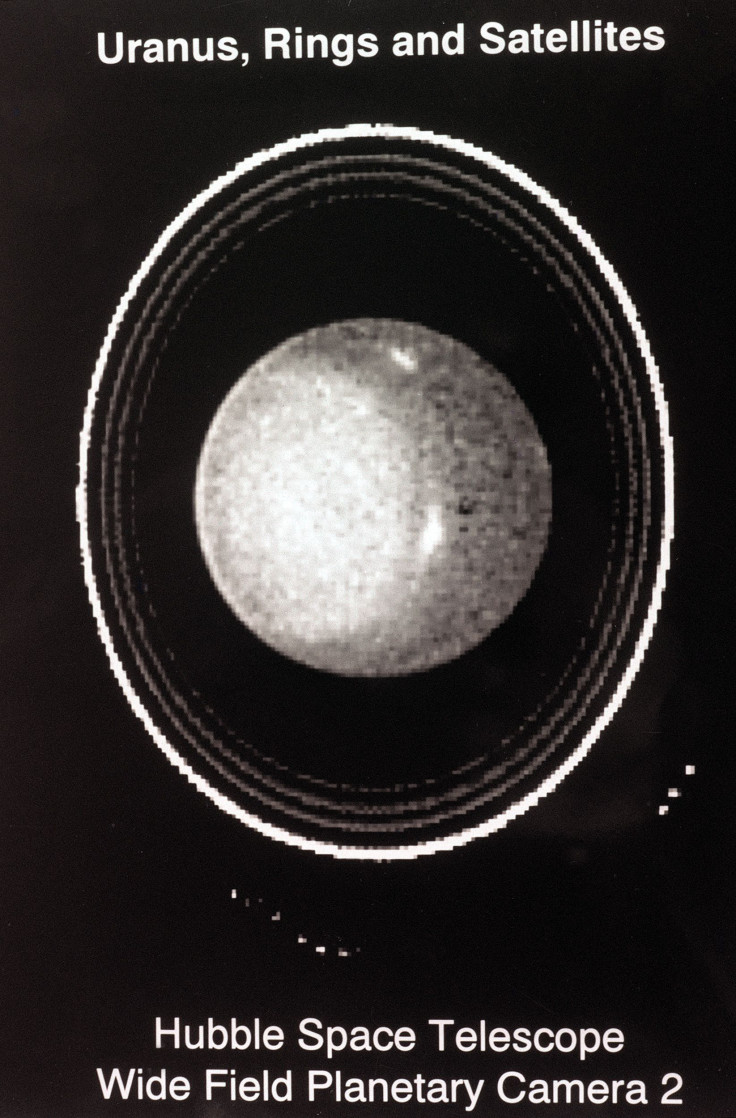Mysterious Warm Glow From Uranus' Cold Rings Is Baffling Scientists

Scientists are baffled by a mysterious heat wave surrounding Planet Uranus' cold rings. What is mysterious is that located far from the hot sun, Uranus receives only a fraction of the heat that Earth receives.
The images that were taken by the Atacama Large Millimeter/submillimeter Array (ALMA) and the Very Large Telescope (VLT) highlight the lack of dust-sized particles in the rings, reported Fox News. For the very first time, the team measured the temperature of the rings, which came in at a cool 77 Kelvin, or 77 degrees above absolute zero (the boiling temperature of liquid nitrogen), or about 320 degrees below zero degree Fahrenheit. While that is cold, it is still warmer than most of outer space, where the temperatures is at about minus 460 degree Fahrenheit.
The scientists are not sure what is causing the warmth.
These rings are also strangely different in composition from those around Saturn and Jupiter.
In a statement, Berkeley professor Imke de Pater described Saturn’s mainly icy rings as broad and constituting a range of particle sizes, from micron-sized dust in the innermost D-ring to tens of meters in size in the main rings. “The small end is missing in the main rings of Uranus, with the brightest ring -- epsilon -- composed of golf ball-sized and larger rocks,” the statement said.
De Pater explained that the epsilon ring differs from rings observed around the other giant planets. He said Jupiter’s rings are made up of particles about a thousandth of a millimeter in diameter each, while Neptune’s rings are almost entirely made of dust. “The epsilon ring doens’t even look like the main rings of Uranus,” he said.
Another author of the study, Edward Molter, described the Uranus ring as a "bit weird." Molter said something has been sweeping the smaller stuff out or its all copping together. “This is a step toward understanding the rings’ composition and whether all the rings came from the same source material or are different for each ring,” he said.
Mystery also surrounds as to how the planets got their rings. Experts say that their moons probably got too close and exploded or crashed into each other and broke into thousands and millions of pieces. They are also of the view that the rings could have formed from captured asteroids or the moons that crumbled after they came under the influence of the planet’s gravity.
© Copyright IBTimes 2025. All rights reserved.





















